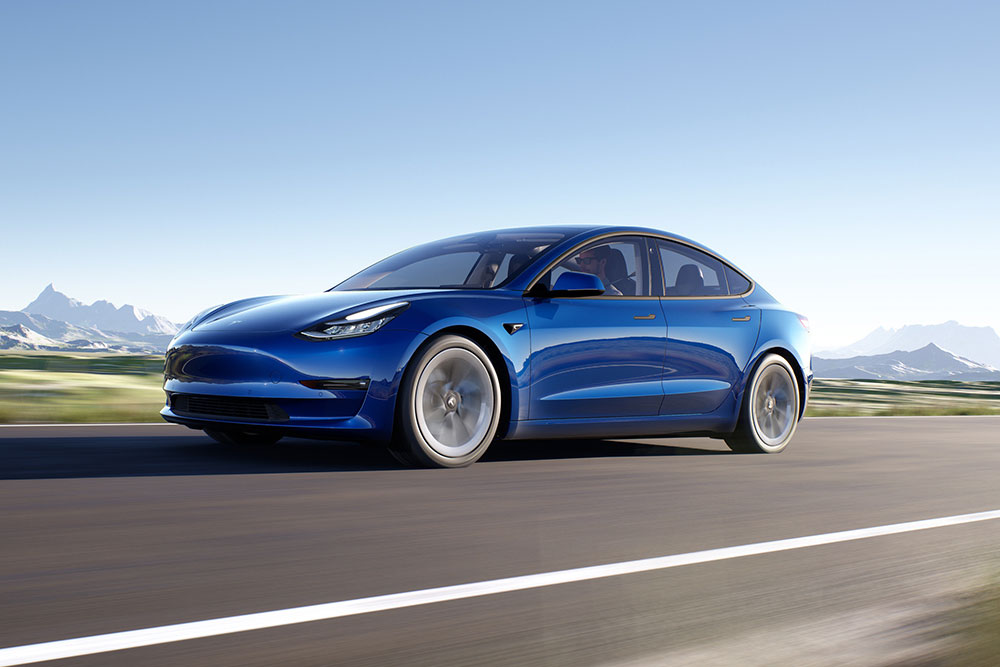Tesla drivers at home with their range
Survey finds Tesla owners drive a similar distance each year to drivers of combustion-engine cars.

Range anxiety, or the fear of running out of power in an electric vehicle with nowhere to charge it, is often cited among the reasons why Australia’s electric car take-up remains low.
However, a new survey conducted by electric vehicle (EV) lobby group Electric Vehicle Council (EVC) and the Tesla Owners Club of Australia (TOCA), claims to have dispelled the phenomenon as a myth, with a majority of the 741 Tesla drivers surveyed saying they travelled the same average kilometres per year as drivers of internal combustion engine (ICE) vehicles.
A statement from the EVC said the survey, which claims to be Australia’s largest ever of electric vehicle owners, found that 89% of Tesla owners drove more than 10,000km a year, while 38% exceeded 20,000km a year.
The national average for all passenger vehicles in Australia is 12,100km annually, according to a June 2020 Australian Bureau of Statistics survey of motor use.
EVC Chief Executive Behyad Jafari said the study would be valuable for policy makers trying to boost Australia’s uptake of EVs, which at the end of September represented just 2.7% of all new vehicles sold.
“This study puts another nail in the coffin of the myth that driving range is an issue for EV owners with the vast majority driving the same average kilometres a year as Australia’s average passenger vehicle,” he said.
“We know range anxiety is a major impediment to people buying EVs. This finding is yet another reason showing there is nothing to fear.”
Tesla is the leading EV brand in Australia with 14,023 sales, as at September, of the 26,355 EVs and plug-in hybrid electric vehicles (PHEVs) sold year-to-date.
The Federal Chamber of Automotive Industries (FCAI) reported the Tesla Model Y SUV was the country’s third best-selling model in September, behind the Ford Ranger and Toyota HiLux.
Tesla vehicles typically have greater range than other EV makes and models and the company’s dedicated Tesla Supercharging network is well established with 51 active sites and 260 active DC fast-charging stalls across Australia.
This compares with the EVC’s most recent State of EVs report released in March, which shows there are 291 public fast charging locations including Tesla’s, and a further 1,580 regular charging locations.
The Tesla Model 3 Long Range currently boasts the longest range of any EV sold in Australia with 603km (WLTP), while the Model 3 Performance (547km) and Model 3 RWD (491km) are listed among the top 10 EV models for range.
While there is a growing number of models that can travel 500km or more on a single charge, at the more affordable end of the spectrum, the standard Nissan Leaf has a range of just 270km (NEDC), while the Mazda MX-30 E35 Astina can only cover 200km (WLTP) between charges.
Other findings from the EVC survey included the fact that only 10% of respondents charged their vehicles at work, prompting Mr Jafari to suggest there is scope for employers to install charging infrastructure.
“If Australia introduced a fringe benefits tax exemption for workplace charging it would help align EV charging with daytime excess solar energy generation,” he said.
Other findings of the survey include:
- The majority of drivers charge their vehicles during off-peak times, suggesting current market offers like time-of-use tariffs are working.
- 51% of Tesla drivers were aged between 50 and 69, with just 12% aged under 40.
- Volkswagen and Toyota were the most common previously owned car before a Tesla.
- Almost half of respondents said they saved more than $2,000 on petrol a year, while 77% said they saved more than $1,000.
- Technology (83%) and environment (78%) were the most common reasons for purchasing a Tesla.
- 65% did not have a regular servicing schedule and 41% saved more than $1,000 on maintenance costs.
Related topics
Things to note
The information in this article has been prepared for general information purposes only and is not intended as legal advice or specific advice to any particular person. Any advice contained in the document is general advice, not intended as legal advice or professional advice and does not take into account any person’s particular circumstances. Before acting on anything based on this advice you should consider its appropriateness to you, having regard to your objectives and needs.
Insurance Products (excluding Travel Insurance) are issued by RACQ Insurance Limited ABN 50 009 704 152 (RACQI) and arranged by its agent, RACQ Distribution Services Pty Ltd (RDS) ABN 35 116 361 650, AFSL 567130 and RDS' authorised representatives (including RACQ Operations Pty Ltd ABN 80 009 663 414, AR No. 234978 (RACQO). Conditions, limits and exclusions apply. RDS and RACQO are in the RACQ group of companies. One of the companies in the RACQ group of companies has a minority shareholding in RACQI.
RDS and RACQO have not taken your personal objectives, circumstances or needs into account when preparing advice regarding insurance products and you will need to consider whether the advice is appropriate for you. Read the Product Disclosure Statement (PDS) and any applicable Supplementary PDS before making a purchase decision on this product. You can also access our Target Market Determinations on this website. RDS receives a commission from RACQI for the policies it arranges. RACQO receives fees paid for services it provides to RDS. Further details about remuneration are available on request prior to purchasing.
Banking and loan products issued by Members Banking Group Limited ABN 83 087 651 054 AFSL/Australian credit licence 241195 trading as RACQ Bank. Terms, conditions, fees, charges and lending policies apply. This is general advice only and may not be right for you. This information does not take your personal objectives, circumstances or needs into account. Read the disclosure documents for your selected product or service, including the Financial Services Guide and the Terms and Conditions, and consider if appropriate for you before deciding.
Except for RACQ Bank, any RACQ entity referred to on this page is not an authorised deposit-taking institution for the purposes of the Banking Act 1959 (Cth). That entity’s obligations do not represent deposits or other liabilities of RACQ Bank. RACQ Bank does not guarantee or otherwise provide assurance in respect of the obligations of that entity, unless noted otherwise.
RACQ Bank subscribes to the Customer Owned Banking Code of Practice which establishes higher standards than the law requires. The Code reflects modern consumer expectations and developments in approaches to issues such as consumer vulnerability, guarantors, and supporting customers through financial hardship. Please read our Customer Owned Banking Code of Practice page for more information.
RACQ Operations Pty Ltd (ABN 80 009 663 414 AR 000234978) and Members Travel Group Pty Ltd (ABN 45 144 538 803 AR 000432492) are acting as an Authorised Representative of the issuer of the insurance, Tokio Marine & Nichido Fire Insurance Co., Ltd. (ABN 80 000 438 291 AFSL 246 548). Any advice set out above is general in nature only, and does not take into account your objectives, financial situation or needs. Before purchasing any travel products, please consider the RACQ Travel Insurance Product Disclosure Statement (PDS) and the Target Market Determinations (TMDs) that apply to these products. Whilst the PDS outlines the Terms and Conditions of these products, the TMDs outline the intended class of customers that comprise the target market for these travel products. This will allow you to consider which products best suit your objectives, financial situation and needs and consider the products appropriateness to your personal circumstances. TMDs also outline matters involving the distribution and the review of these products. The PDS, Supplementary PDS and TMDs for each travel product can be found here.

